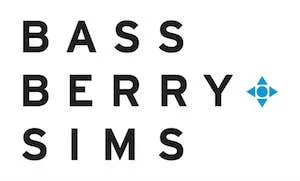On December 4, the USPTO's Patent Trial and Appeal Board (PTAB) designated three decisions precedential, with two addressing real party in interest (RPI) and one addressing follow-on petitions under 35 U.S.C. § 314(a). In one decision, the PTAB terminated several IPRs filed by RPX Corporation (RPX) because one of its members was time-barred and constituted an unnamed RPI. The PTAB used a flexible test that focused on determining whether the member was a clear beneficiary of the IPRs with a preexisting, established relationship with the petitioner. In another decision, the PTAB did not feel obligated to determine whether an unnamed party was an RPI because, even if it were, no time-bar or estoppel issues were implicated. In the last decision, the PTAB relied on § 314(a) to deny a joinder motion from a party that had previously filed its own unsuccessful petition.
Real Party in Interest
RPX Corp. v. Applications In Internet Time, LLC, Case IPR2015-01750, Paper 128, IPR2015-01751, Paper 128, IPR2015-01752, Paper 126 (PTAB October 2, 2020) (precedential)
These cases involve a remand from the Federal Circuit where the court instructed the PTAB to make various findings related to whether one of RPX's members, Salesforce, was an unnamed RPI. RPX sells memberships to companies for defensive patent aggregation but will also file IPRs on patents that its members are accused of infringing. If Salesforce were found to be an unnamed RPI, the IPRs would be time-barred because Salesforce was served with a complaint more than one year before RPX filed the IPRs.
The PTAB first noted that it is the “petitioner [who] bears the burden of persuasion to demonstrate that its petitions are not time-barred under [35 U.S.C.] § 315(b) based on a complaint served on a real party in interest more than a year earlier.” The PTAB acknowledged that the RPI determination is fact intensive and embarked on an analysis of whether Salesforce would benefit from the IPRs and “whether RPX can be said to be representing [Salesforce's] interest after examining its relationship with Salesforce.” After considering RPX witness testimony and RPX's public statements, the PTAB held that “patent aggregation, licensing, and filing IPRs to protect its clients work together to protect its members from the threat of patent litigation and are all important components of RPX's core subscription business.” Even though RPX had its own reason for filing the IPRs, the PTAB relied on the Federal Circuit's statement that an IPR may be barred “even when the petitioning party might separately have its own interest” and held that “RPX filed these IPRs to benefit its existing clients, supporting a conclusion that Salesforce is an RPI in these proceedings.”
Importantly, the PTAB was unpersuaded by RPX's argument that its policy was not to have communications with members about forthcoming IPRs: “as the Federal Circuit stated, intentionally avoiding discussion about a forthcoming IPR against its client for the sole purpose of avoiding having to name the client as an RPI … suggests a ‘willful blindness' strategy …, supporting a conclusion that Salesforce is an RPI in these proceedings.” The PTAB also relied on the Federal Circuit's holding that a nonparty can be an RPI even though there was no express or implied agreement to file the petition. Ultimately, the PTAB concluded that Salesforce was an unnamed RPI and therefore terminated the proceedings.
Sharkninja Operating LLC v. iRobot Corp., Case IPR2020-00734, Paper 11 (PTAB October 6, 2020) (precedential)
This case involved an institution decision where the patent owner had argued that the PTAB should deny institution because the petitioner failed to name all RPIs, namely, the petitioner's corporate parent. In the decision, the PTAB acknowledged 35 U.S.C. § 312(a)(2)'s requirement that a petition must identify all RPIs. But, the PTAB also recognized that a petitioner may be allowed to cure such a defect and add an RPI. The PTAB concluded, however, that they need not address whether the corporate parent was an unnamed RPI because, “even if it were, it would not create a time bar or estoppel under 35 U.S.C. § 315.”
314(a) – Apple Inc. v. Uniloc 2017 LLC, Case IPR2020-00854, Paper 9 (PTAB October 28, 2020) (precedential)
In this case, Apple was sued for infringing the ‘088 patent and had previously filed a petition that was denied for failing to meet the reasonable-likelihood institution standard. After the one-year time-bar against Apple had lapsed, Microsoft filed its own petition challenging the ‘088 patent. The PTAB instituted the case. Apple then filed a petition substantively identical to Microsoft's with a motion to join Microsoft's case. The patent owner relied on the General Plastic factors (discussed here) to argue that the PTAB should use its discretion pursuant to § 314(a) to deny Apple's follow-on petition and joinder motion because it was using this second petition as an “end run around its failed petition.” Apple, on the other hand, argued that it should be allowed to take over the case should Microsoft settle. The PTAB was not persuaded by this argument.
The PTAB applied the General Plastic factors, finding that six of the seven factors weighed toward denying institution and the remaining factor was neutral. The PTAB therefore denied institution as well as the joinder motion. Following is the PTAB's General Plastic factor analysis:
- “whether the same petitioner previously filed a petition directed to the same claims of the same patent”
The PTAB found that this was a follow-on petition, and therefore, this factor leaned toward denying institution.
- “whether at the time of filing of the first petition the petitioner knew of the prior art asserted in the second petition or should have known of it”
Apple provided no explanation for whether it knew of the prior art asserted, and thus, the PTAB found that this factor weighed in favor of denying institution.
- “whether at the time of filing of the second petition the petitioner already received the patent owner's preliminary response to the first petition or received the Board's decision on whether to institute review in the first petition”
Apple had seen the PTAB's decisions denying institution of its first petition as well as denying rehearing of that decision. So, this factor also weighed against institution.
- “the length of time that elapsed between the time the petitioner learned of the prior art asserted in the second petition and the filing of the second petition”
Because Apple failed to explain when it learned of the prior art, this factor weighed in favor of denying institution.
- “whether the petitioner provides adequate explanation for the time elapsed between the filings of multiple petitions directed to the same claims of the same patent”
Apple provided no explanation, and therefore, the PTAB found this factor to weigh toward denying institution.
- “the finite resources of the Board”
The PTAB found this factor to weigh toward denying institution because of the PTAB resources that would be spent should Microsoft settle and Apple continue the case.
- “the requirement under 35 U.S.C. § 316(a)(11) to issue a final determination not later than 1 year after the date on which the Director notices institution of review”
This factor was considered neutral because there was no evidence or argument presented by the parties on this factor.
Conclusion
The PTAB continues to move in a more patent-owner-friendly direction. The RPX case raises the bar on petitioners trying to show that an unnamed party is not an RPI by using a very broad and flexible approach focusing on whether the unnamed party would benefit from the IPR and whether there was a preexisting relationship. In every case where it is warranted, patent owners should seek to show that a time-barred, unnamed party is an RPI because it may result in a very quick and easy win. Of course, raising an RPI argument by a patent owner when there is no time-bar or estoppel issues will likely not yield any results.
The PTAB has also continued to develop its follow-on petition case law under § 314(a) by now applying that section to joinder motions. This potentially removes a powerful weapon from the arsenal of an unsuccessful petitioner facing a time-bar. They will no longer be able to readily join a subsequent petition filed by a third party. Nevertheless, it still seems wise to try, and petitioners doing so should focus on explaining each of the General Plastic factors in the hope that they can convince the PTAB to grant their motion.
The content of this article is intended to provide a general guide to the subject matter. Specialist advice should be sought about your specific circumstances.

